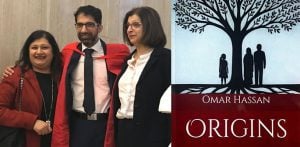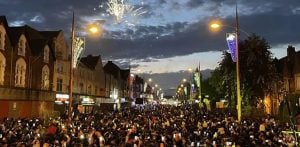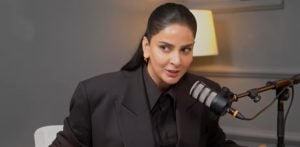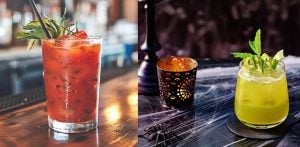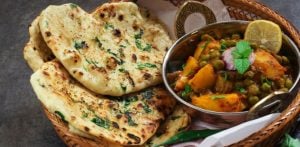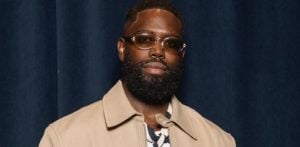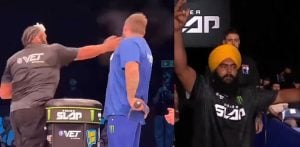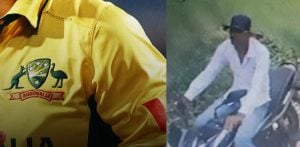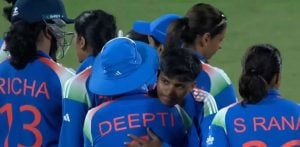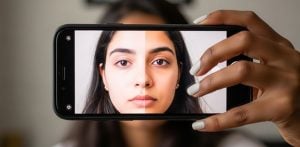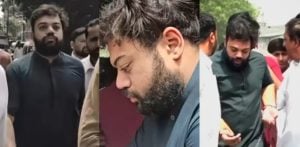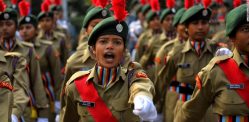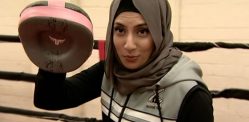"We don’t learn about these stories in school"
Preeti Dhillon, a remarkable researcher, writer, and historian, has dedicated her career to unearthing the hidden narratives of oppressed and marginalised communities.
With a profound passion for capturing the voices that have long been silenced, she is a torchbearer of untold histories.
This torch now shines brilliantly in the form of her debut book, The Shoulders We Stand On: How Black and Brown People Fought for Change in the United Kingdom.
As a graduate of the prestigious University of Oxford, Preeti is armed with the knowledge and skills necessary to delve into the depths of British Asian history.
Her journey as an Independent Research Fellow with the Women’s History Network from 2021 to 2022 allowed her to further her exploration of the experiences that have shaped the landscape of the UK.
However, this is not just a career for Preeti; it’s a commitment to preserve the legacy of those who fought for change.
The Shoulders We Stand On is a testament to this dedication.
The book is woven with the threads of 10 remarkable movements, campaigns, and organisations led by Black and Brown individuals from the ’60s to the ’80s in the UK.
These movements battled against the intertwined evils of racism and capitalism, forging paths of resistance in every aspect of life, from housing to education to healthcare.
The journey starts with the Indian Workers’ Association, one of the pioneering organisations, which, astonishingly, still thrives today.
It concludes in 1981, a year etched in history with uprisings that reverberated throughout the nation.
In order to get a better understanding of how important this history is for understanding the impact and life of British Asians, we spoke with Preeti Dhillon to hear her thoughts.
What inspired you to become a historian and writer?

I grew up in Southall, part of my family has lived there ever since arriving from Kenya via India, but I didn’t know about anything that had happened there in the ’60s-’80s.
I didn’t know about the National Front who used to beat up Brown and Black people, how teenager Gurdip Singh Chaggar was killed by racists in 1976, nor how protestor Blair Peach was killed by the police in 1979.
And I didn’t know about the anti-racist resistance led by the Southall community.
I have a history degree but somehow didn’t know the vital history of my own town.
My family didn’t talk about it, the memories can be quite painful, and we certainly didn’t learn about it at school.
I found out about what had happened in Southall after doing some research into anti-racist movements in the UK.
I thought that we must have had our own version of the civil rights movement, and we did!
Not only were there lots of anti-racist movements across the UK in the ’60s-’80s but so much had happened right where I grew up.
All these stories just had to be told and became The Shoulders We Stand On.
As a researcher in the international development sector, my passion was telling stories of people we often don’t hear from, so that has carried over into my historical work.
What led you to choose the title ‘The Shoulders We Stand On’?
With the title The Shoulders We Stand On, I wanted to honour the elders for their struggles, sacrifices and hard work to secure the rights we take for granted today.
They are the giants on whose shoulders we stand and we must remember their stories as we organise today.
“For example, racial discrimination wasn’t illegal until 1965.”
It was thanks in part to people like those who led the Bristol Bus Boycott in 1963 which led to this landmark legislation.
A bus company in Bristol had a ‘colour bar’ and wouldn’t hire Brown or Black people as drivers or conductors on the buses, and a small group of young Black men organised a boycott to protest this policy.
They won this fight, the company overturned the colour bar and Brown and Black men were finally allowed to work on the buses.
The Labour leader at the time, Harold Wilson, told the leaders of the boycott that he would introduce the first anti-discrimination law if they got into power, and that is what happened.
However, the law didn’t outlaw discrimination in employment, but it was a huge step forward.
Can you share some stories that particularly impacted you?

One of the first movements I learned about was the Grunwick Strike, and it blew me away.
In a sleepy corner of North West London, a small group of Brown women led a strike to fight for better working conditions in a photo processing factory.
This group of strikers, led by the formidable Jayaben Desai, rallied thousands of the nation’s working class to their cause.
At its height, there were 20,000 workers on the picket line from across the UK.
Their amazing two-year struggle made the nation sit up and take Brown women seriously for once.
The epic story of Grunwick needs to be made into a film!
Another story which really stayed with me was that of the Bradford 12.
In 1981, the National Front were confidently attacking Brown and Black people, and there were uprisings in 29 towns and cities across the country.
Some Brown men in Bradford decided to make some petrol bombs to defend themselves against the National Front because they didn’t trust that the police would protect them.
The bombs weren’t used, but they were found by the police and 12 young men were put on trial.
Through their epic court case and the campaign that supported them, they were acquitted and proved that self-defence is no offence.
This was the first time in the UK that this had been acknowledged.
Can you provide insights into the research process?
When readers pick up The Shoulders We Stand On I want them to feel like they were there, watching this action unfold, and to feel as if they are reading a page-turning novel rather than a history book.
To do this, I used a range of sources in the two-year research process.
As well as books and articles, I used radio pieces and TV segments.
I listened to interviews with activists who participated and used their own words, and I scoured newspaper articles to find details to really bring the stories to life.
“What really took the book to the next level was first-hand archival research.”
I visited 12 different archives and looked at material from the movements themselves, including campaign material like pamphlets, as well as meeting notes and personal reflections.
And I had the honour of personally interviewing some people who had participated in the movements, like Farrukh Dhondy who was a core member of the Black Panthers and later the Race Today collective.
The 10 stories that I include have been spoken about before, but either in academic literature which is inaccessible to most people, or in local history projects which don’t reach many people.
I have combined the two.
The Shoulders We Stand On has the rigour of academia with the accessibility of local history, to create a history book for people who might not usually read history.
Were there any shocking moments for you unearthing these stories?

There was a lot that shocked me when I was researching for the book, but what was done to Brown and Black women really shook me.
Some Brown women coming from South Asia were subjected to ‘virginity testing’, that is, invasive vaginal examinations to see if they were still virgins.
This is because if a woman was a fiancé, they could enter the country with a visa on arrival rather than applying for one in their country of origin as wives had to do.
So the immigration officers thought people might try and sneak into the country and decided that a virginity test would be an appropriate response.
It was a disgusting, humiliating, practice that the government tried to deny before having to finally admit it was happening, not only on arrival in the UK but also in consulates in South Asia.
Similarly, the injectable contraceptive Depo-Provera was given to Brown and Black (and white working-class) women, often without their consent, as a form of population control.
This was before it was even available for the general market as there were concerns about side effects, which initial trials had shown included cancer and sterility.
When I first learned about both of those issues I had to take some long walks to try and process what I had read.
How do you hope these stories will inspire people?
There is the old adage that if you can see it then you can be it, and by seeing themselves in the stories in the book, it is my hope that readers will know that they too can fight for change.
We don’t learn about these stories in school, or in the media we consume.
We learn about the civil rights movement in the USA, which is important but is also not our reality.
“There is great power that comes from learning your own history and relating to it.”
If I had learnt about the Grunwick Strike or the Asian Youth Movements when I was at school, I would have grown up with a different sense of self.
These stories made me feel powerful when I first learnt about them, and I hope they can do the same for readers too.
How can British Asians learn more about their own history?

Talk to your parents. Talk to your grandparents, your family friends, your elderly neighbours.
Ask everyone you know who lived through the 60s to 80s to share their stories with you, Brown, Black and white.
There are so many lived experiences that people have been unwilling to share because of the trauma of that time but their stories are important.
Their struggles, their survival, and their resistance deserve to be heard.
And as importantly, document as much as you can.
Ask them if you can record their stories. Ask if they have anything from that time, such as newspaper clippings, leaflets, posters, or just anything.
This is all really useful material for our communities to know more about our history.
Contact an archive and see if they would like the material for their collections.
There is a list of the archives I visited at the back of my book, start by contacting them, they are desperate for material.
Is the UK still grappling with equality?
The experiences that led to the movements, that is, the racism in all areas of life from the workplace to the streets provide a really helpful context to understand the UK today.
Once we understand the history of racism in the UK, then it helps us to understand the UK today.
For instance, both the Conservative and Labour parties have enacted racist policies (it was the Labour government that introduced the restrictive 1968 Commonwealth Immigrants Act).
“It can also help us to know what we can do to create change.”
For example, knowing the history of that time tells us that representation politics alone is not going to solve the issues of racism in the UK.
What does your book bring to the ongoing discourse on race and activism in the UK?

The Shoulders We Stand On brings together, for the first time in this accessible format, important stories from our collective British history.
The film Pride made the story of the group Lesbians and Gays Support the Miners a well-known part of our history, and I hope my book does the same for these movements by Brown and Black people.
They should be household names.
Everyone should know about the Asian Youth Movements and the Grunwick Strike. They literally changed the course of British history.
Through my book, I want to ensure these stories are passed on to my generation and the ones to come.
What do you hope readers will take away from the book?
Above all, I hope readers take away a new sense of hope.
Hope for the future of Brown and Black people in the UK, hope that we can change the status quo, and hope that if it has been done before then we can do it again.
As I say in the book:
“It is ultimately a book of hope.”
Hope that together we can make a difference, that together we are powerful, and that we don’t have to tackle this alone.
There is a long and deep history of activism by people who look like us, and they can inspire us to make a difference, just like they did.
Preeti Dhillon’s work is not just an exploration of history; it is an act of remembrance, an act of reclaiming the voices and stories that have been buried beneath the sands of time.
The Shoulders We Stand On is not just a book; it is a testament to the resilience of communities that have endured hardships, faced adversity, and still found the strength to demand change.
It is a celebration of those who stood tall and unwavering on the shoulders of those who came before them.
Through Preeti’s words, opinions and thoughts, as well as diving into some of the stories she touches on in the book, we can see how vital the conversations around British Asian history are.
Grab your own copy of The Shoulders We Stand On here.





